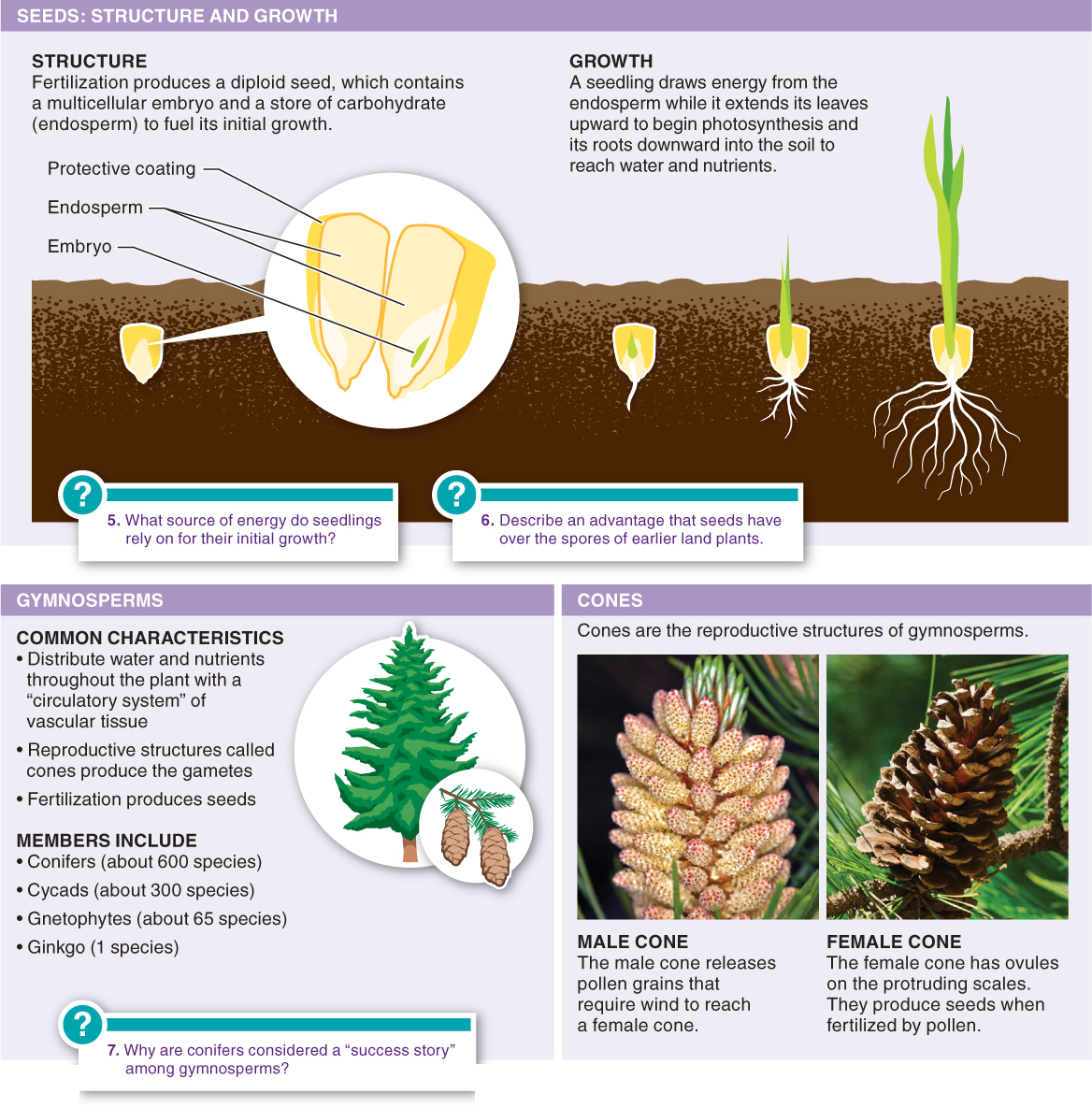12.2.3 12.5–12.7: The advent of the seed opened new worlds to plants.
A seed, which contains a multicellular embryo and a store of nutrients, is a way for plants to give their offspring a good start in life.

Question 12.17
Mosses and ferns differ from gymnosperms and angiosperms in their reproductive strategies in which of the following ways?
- a) Mosses and ferns rely on liquid water for fertilization, whereas angiosperms and gymnosperms do not need liquid water for fertilization.
- b) Mosses and ferns have much larger seeds than do angiosperms and gymnosperms.
- c) Mosses and ferns use wind pollination, whereas angiosperms and gymnosperms use insects for pollination.
- d) Mosses and ferns are primarily diploid in their adult (reproductive) form, whereas gymnosperms and angiosperms are primarily haploid.
- e) Mosses and ferns are primarily haploid in their adult form, whereas gymnosperms and angiosperms are primarily diploid.

Question 12.18
Which of the following is characteristic of gymnosperms?
- a) They are more diverse than the angiosperms.
- b) They are wind-
pollinated. - c) The gametophyte generation is dominant.
- d) They are water-
pollinated. - e) All of the above are correct.

Question 12.19
In terms of their adaptation to living on land, how are reptiles similar to the seed plants?
- a) Both reptiles and seed plants became completely independent of water.
- b) Reptiles eat plants.
- c) Seed plants and reptiles have developed structures such as cuticles and impermeable skin to minimize desiccation.
- d) Reptiles and seed plants have developed structures that house their gametes and protect them from the surrounding environment.
- e) Both c) and d) are correct.

Question 12.20
Which of the following terms includes all of the others in the list?
- a) angiosperm
- b) fern
- c) vascular plant
- d) gymnosperm
- e) seed plant

530